In July 1863, over 170,000 soldiers converged on the small town of Gettysburg, Pennsylvania in a battle that changed both the course of the Civil War and ultimately the nation. Every kid in America studied the Battle of Gettysburg in history class and memorized at least a part of President Lincoln’s famous address delivered at the dedication of Soldiers’ National Cemetery, the final resting place of 3,500 Union soldiers. But after we passed our exams, we put it behind us. In Gettysburg, those history lessons live on.
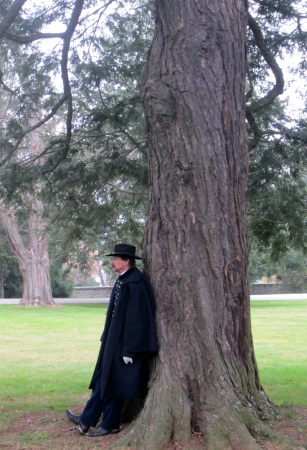
Every July Gettysburg commemorates the historic battle with as many as 15,000 Civil War re-enactors arriving to give visitors a glimpse into the 1860’s through battle re-creations, cultural demonstrations, musical performances and encampments. Each day features two battles with Union and Confederate cavalry, artillery, infantry and an explosive pyrotechnic display – an ideal way to jog one’s memory of the lessons learned.
Every November, the dedication of the cemetery and the Gettysburg address are commemorated on Remembrance and Dedication days. November 19th, the anniversary of Lincoln’s address, is Dedication Day. In 2012, the keynote speaker was a man who knows a bit about Abraham Lincoln … Steven Spielberg. As he stood on the stage next to Lincoln’s portrait addressing the thousands of people in attendance, one theme was central to his speech. “I am humbled to stand in this place where Abraham Lincoln addressed a nation torn from war with a brief speech that provided hope when it was needed most.” President Obama is invited to be the speaker at this year’s 150th anniversary event – as of this writing there’s no word yet on whether or not he will accept.
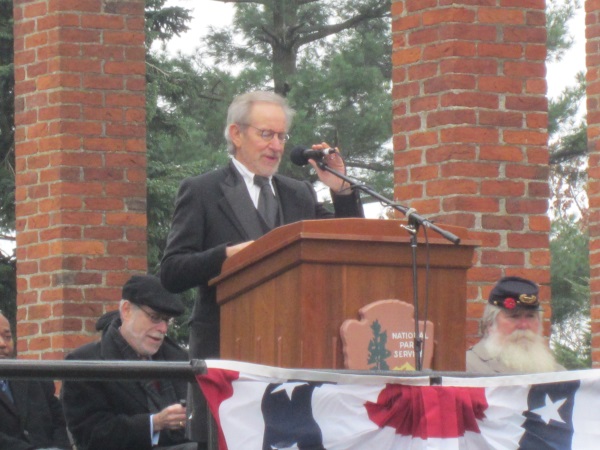
Remembrance Day, which takes place this year on November 23, begins with a parade of Union and Confederate soldiers through the town. Throughout the day townspeople and re-enactors in period costume stroll the streets and soldiers on horseback are commonplace. As daylight fades Soldiers’ National Cemetery glows with the flickering candlelight from thousands of luminaries placed on the graves of those who paid the ultimate price for freedom. Walking through the illuminated cemetery was an experience I won’t soon forget.
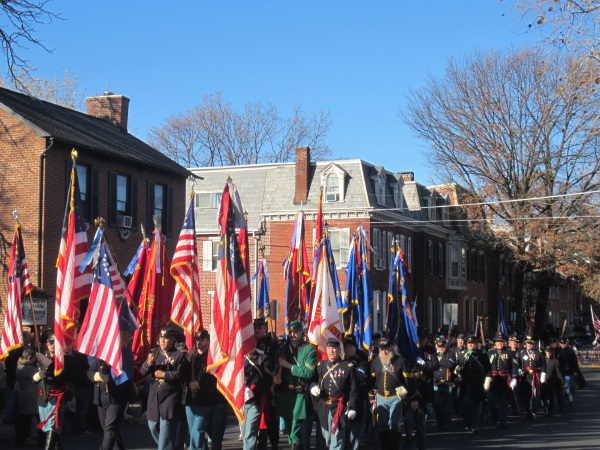
Gettysburg National Military Park is the most visited of all the military parks in the U.S., with more than 6,000 acres of preserved hallowed ground. It’s a place of learning, reflection and patriotism. It also has one of the largest outdoor sculpture collections in the world comprising more than 1,300 monuments and markers. The park’s Museum and Visitor Center, just four years old, is a good starting point for the Gettysburg experience and has already welcomed millions through its doors. The museum is home to the Gettysburg Cyclorama, a 377 feet by 42 feet circular oil painting, which serves as a vivid memorial to the soldiers who took part in Pickett’s Charge. There are nine ways to tour the rest of the park including horseback, bicycle, guided tours by bus or car and even by Segway. Guides like Jim Pangburn know more about Gettysburg than the history books. “I studied for five years before becoming a guide here at the park,” says Jim. “I’m still learning new things every day.”
The jewel in the crown of the 150th Anniversary observation this year is the new Gettysburg Seminary Ridge Museum which opened on July 1, 2013. The museum is on the campus of the Lutheran Theological Seminary and occupies 20,000 square feet on four floors of renovated Schmucker Hall. Explore history where it happened. Walk the halls where wounded soldiers suffered, experience General Buford’s view from the seminary cupola and stand where many from both sides lost their lives.
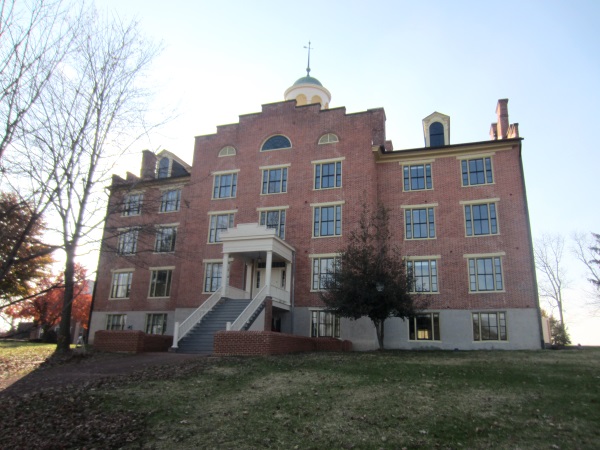
Voices of Duty and Devotion, the main exhibit, begins on the 4th floor with the story of the fighting on Seminary Ridge on July 1, 1863. Pledging “we have come to stay,” the outnumbered Union troops fought to hold back the Confederates as reinforcements from both armies continued to arrive. The staggering losses on both sides left the wounded and dying to seek shelter in the seminary. The 3rd floor depicts what happened within the walls of Schmucker Hall as it became one of the largest field hospitals in Gettysburg.
Exhibits on the 2nd floor provide a context for understanding the issues that divided a nation and the moral and intellectual struggle leading up to the war. Some offer an opportunity to delve more deeply into how a county on the Mason Dixon line experienced civil strife from the debates over religious issues, anti-slavery activities, the Underground Railroad and the African American community.
While Gettysburg is best known for historical pursuits, there’s another side to this charming town celebrating traditions as well as the area’s bountiful harvest. Before the war came there was baseball. The annual 19th Century Baseball Festival held in July takes fans back in time to 1864 to see what baseball was like in the tiny town right before the battle changed things forever. Thousands gather to watch teams play vintage baseball, complete with old-time uniforms.
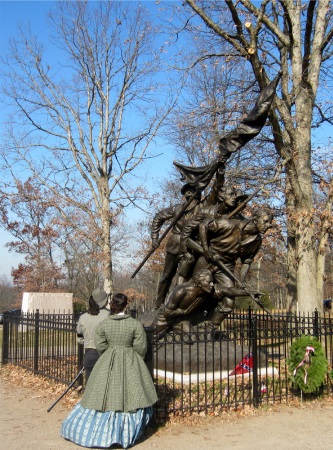
The Gettysburg area is also apple country with over 20,000 acres of apple, peach and pear trees. Every spring the countryside blooms with thousands of apple blossoms when the community hosts the Annual Apple Blossom Festival. Highlights include live entertainment, wine tasting, hundreds of arts and craft demonstrations and the presentation of the Pennsylvania Apple Queen. In autumn Gettysburg celebrates the harvest of all its apples with a National Apple Harvest Festival held over two weekends in October. In addition to more than 300 craft vendors, the festival offers apples in every form, from jellies, cider and pancakes to pizza, syrups, sausage and applesauce. Freshly-popped kettle corn, open pit beef and sweet potato fries bring visitors back every year, while hayrides, a petting zoo and a puppet show highlight activities for the family. Antique farm equipment and cars are also showcased along with an antique apple cider press.
Gettysburg also has a growing wine industry that has produced several varieties of award-winning wines. The Gettysburg Wine and Fruit Trail gives visitors a chance to tour the renowned vineyards and orchards throughout the scenic countryside.
Bluegrass music is big in Gettysburg and is celebrated with two yearly festivals, one in mid-May and the other in late August. Dozens of musicians come together for four days of music, workshops, food and good times. The “Old Trailer” Main Stage at Gettysburg has hosted performances by the biggest and the best in the genre including the Father of Bluegrass himself – Bill Monroe.
Other events throughout the year include the Gettysburg North-South Marathon in April, antique car shows and Gettysburg Bike Week. During the holiday season there’s even a Tuba Carol Fest on historic Lincoln Square.
Whether you plan to visit for the history, the baseball, the apples or the Bluegrass, you’ll leave remembering that this is a very special place – and those history lessons will never be forgotten again.
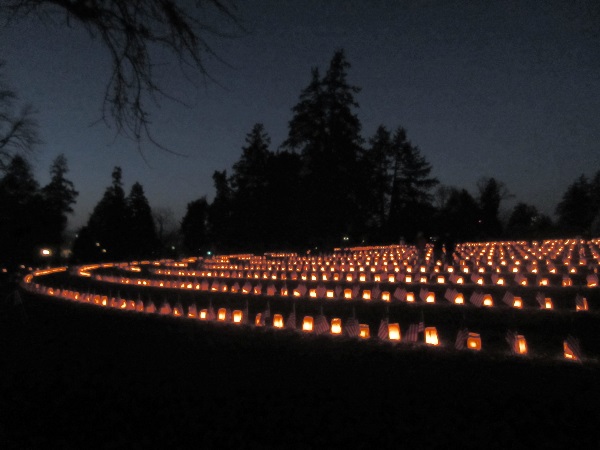
[alert type=white]
Where to Stay:
Historic Fairfield Inn – Sleep in history at one of the oldest continually operating inns in America. The Inn has hosted Patrick Henry, Thaddeus Stevens, General James Ewell Brown Stuart and Robert E. Lee – just to name a few historic characters. Built in 1757, the Inn’s suite and guest rooms are decorated with period antiques offering a comfortable historic lodging option for your time in the Gettysburg area. 15 West Main Street, Fairfield, PA 17320, 717-642-5410; www.thefairfieldinn.com
Gaslight Inn – An oasis in town conveniently located one block from Lincoln Square, the center of Gettysburg. Guest services include booking arrangements for private tours, dinner suggestions and reservations and fresh baked cookies each afternoon. 33 East Middle Street, Gettysburg, PA 17325, 717-337-9100; www.thegaslightinn.com
Where to Eat:
The Mansion Restaurant at Fairfield Inn – Even if you choose not to stay at the Historic Fairfield Inn, you should consider it for dinner. Try the 1863 Ham & Bean soup originally served to hungry Civil War soldiers. Entrees include Confederate Crab Cakes and Yankee Pot Roast with Short Rib. After dinner feel free to tour the Inn and soak in all the history. 15 West Main Street, Fairfield, PA 17320, 717-642-5410; www.thefairfieldinn.com
Dobbins Tavern – Dine in candlelit elegance at this historic 1776 tavern in the center of Gettysburg. Menus list entrees “Of Flesh and Fish.” Try the Drunken Scallops – deep sea scallops sautéed with bacon and herbs then drowned in Chablis. 89 Steinwehr Avenue, Gettysburg, PA 17325, 717-334-2100; www.dobbinshouse.com
Gettysburg Cupcake Cafe – Satisfy your sweet tooth with a decadent cupcake from Gettysburg Cupcake Café. This adorable café located in a pink house in the center of historic Gettysburg serves mouth-watering flavors like Death by Chocolate, Peanut Butter Cup and Red Velvet. A selection of sandwiches is also available for a quick bite. 430 Baltimore Street, Gettysburg, PA 17325, 717-334-9909; www.gettysburgcupcakecafe.com
What to Do:
Gettysburg National Military Park Museum and Visitor Center – Check out the Gettysburg Cyclorama and schedule a tour of the park with a guide on horseback, bicycle, Segway or by car. Witness the 150th anniversary of Lincoln’s Gettysburg address on Dedication Day, November 19th. www.gettysburgfoundation.org
Seminary Ridge Museum – Walk up to the cupola to experience General Buford’s view during the Battle of Gettysburg. www.seminaryridge.org
Gettysburg Wine and Fruit Trail – Travel along the trail to visit farms and wineries and sample the spirits and harvests of the region. www.gettysburgwineandfruittrail.com
*Schedule a visit during one of Gettysburg’s many festivals to celebrate the apple harvest, listen to Bluegrass musicians or take in a game of vintage baseball. www.gettysburgtravel.com
[/alert]

